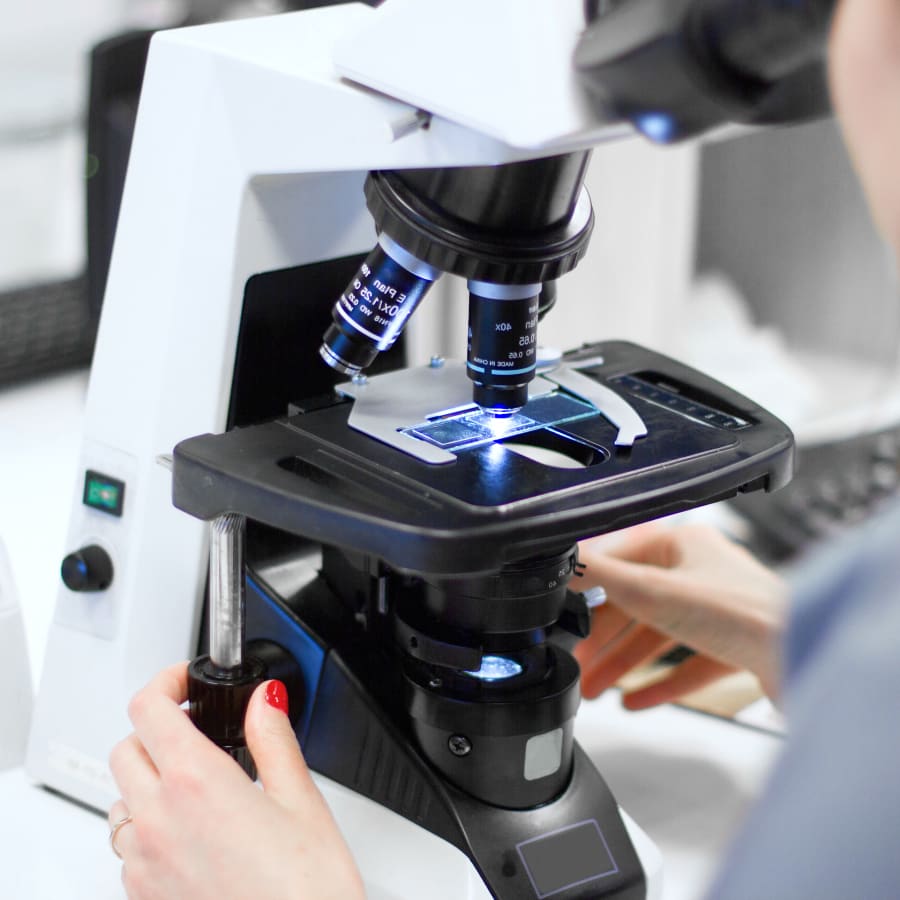Veterinary Diagnostic Lab
With our in-house veterinary diagnostics lab, we are pleased to offer diagnostic testing to allow our vets to provide an accurate diagnosis of your pet's medical issues.
The use of diagnostic imaging allows our team of veterinary professionals to create extremely detailed images of your pet's internal structures.
At Mill Plain Veterinary Clinic, we use advanced tools to diagnose your pet's health issues precisely. Our diagnostic services cover a wide range of tests, such as digital radiology, cardiac ultrasound imaging, bloodwork, and more.

In-House Vet Lab & Veterinary Pharmacy in Danbury
Our veterinary team conducts diagnostic tests accurately and obtains immediate results in our in-house laboratory so we can quickly diagnose your pet's symptoms and start their treatment swiftly.
Our pet pharmacy in Danbury contains many prescription medications and diets giving us quick access to the medications your cat or dog may require while in our care.

Our Veterinary Diagnostic Services
With our in-house veterinary diagnostics lab, we can offer our patients advanced vet diagnostic testing, an accurate diagnosis, and fast treatment options.
- Radiography (Digital X-rays)
Using a radiograph (digital X-ray), we are able to examine your cat or dog's internal systems to uncover information that might not be visible from the outside.
Radiography is non-invasive, painless, and safe. It only uses very low amounts of radiation. Because the radiation levels required to perform radiography are extremely low, even pregnant females and very young pets can have this procedure done.
We are able to use radiographs to evaluate bones and organs and diagnose conditions such as broken bones, chronic arthritis, bladder stones, spinal cord diseases, and some tumors.
- Endoscopy
An endoscope is consists of a very small camera with a light attached at the end of a flexible tube.
When we conduct an endoscopy, a long, thin tube is inserted directly into your pet's body to examine an internal organ or tissue in detail.
Minimally invasive endoscopes can be inserted into the openings of your cat or dog's body such as the anus or mouth.
- Bloodwork
At our vet lab in Danbury, we run a handful of common and specialized blood tests to evaluate the health of your pet and diagnose their illness.
A few of the most common veterinary blood tests we implement include CBC (complete blood count), white blood count, hemoglobin and MCHC, hematocrit, platelets, eosinophils, and blood serum profile.
- Urinalysis
Urinalysis is a critical diagnostic test that gives your vet key insights into the physical and chemical properties of your animal companion's urine.
We usually use urinalysis to assess the health of your pet's kidneys and urinary tract system, but it could also be used to detect issues in other organ systems and is important for diagnosing metabolic diseases such as diabetes.
This is a valuable diagnostic test for both healthy and sick animals and should be included in any comprehensive evaluation of your pet's overall health.
- Fecal Exams
A fecal exam is the microscopic examination of a cat or dog's feces, which we can perform at our in-house vet lab in Danbury.
The main goal of a fecal exam is to detect and treat any GI infections that might be compromising the health and even the health of everyone in your home. Fecals help your vet to determine if your cat or dog has intestinal parasites such as roundworms or hookworms.
Parasites can make animals really uncomfortable, irritable, and can cause more serious problems. Some could even be spread to humans.
Because these parasites live in your pet’s gastrointestinal tract, they are usually hidden out of sight. The only way to detect their presence is with a fecal exam.
You should have an annual fecal exam included in all of your pet's routine wellness checkups.
- Digital Dental X-Rays
If your pet is suffering periodontal disease, most of the damage would be occurring below the gum line where it can't be easily seen. Digital dental X-Rays help our vet evaluate your animal companion's oral health.
Digital X-Rays are safe for cats and dogs. They let our veterinary team examine the roots, bones, and internal anatomy of your pet's teeth.
With digital X-Rays, the risk of radiation exposure for your pet is significantly lower than with traditional X-Ray technology. We can see beneath the surface of your pet's gum line to fully examine every tooth.
This technology lets your Danbury vet get results immediately, then project them onto a computer screen to review.
- Cardiac Ultrasound Imaging
An echocardiogram, also called an echo or cardiac ultrasound, is a diagnostic tool that examines the heart and its surrounding areas. With cardiac ultrasound imaging, we are able to work up heart disorders and conditions fully.
We can quickly diagnose your pet's condition and commence treatment promptly by using this readily accessible tool in our in-house lab.
- Ultrasound Imaging
With ultrasound imaging, we expose part of the body to high-frequency sound waves to produce images of the inside of the body.
Because we capture ultrasound images in real time, we can see the structure and movement of your pet's internal organs, as well as blood flowing through the blood vessels.
